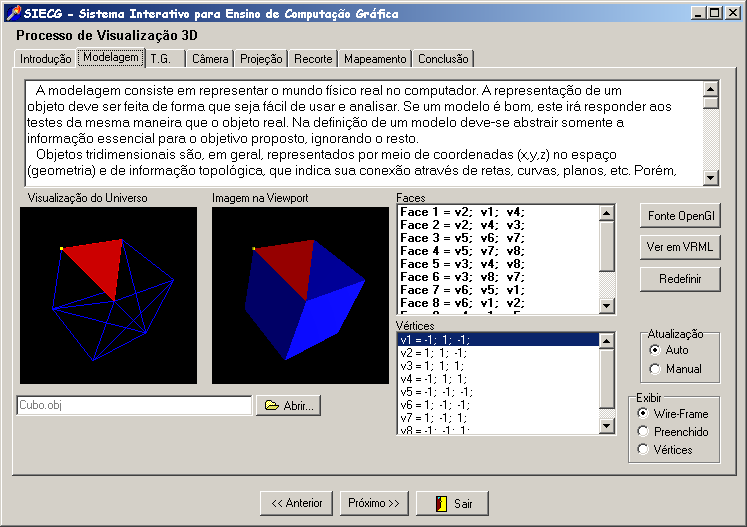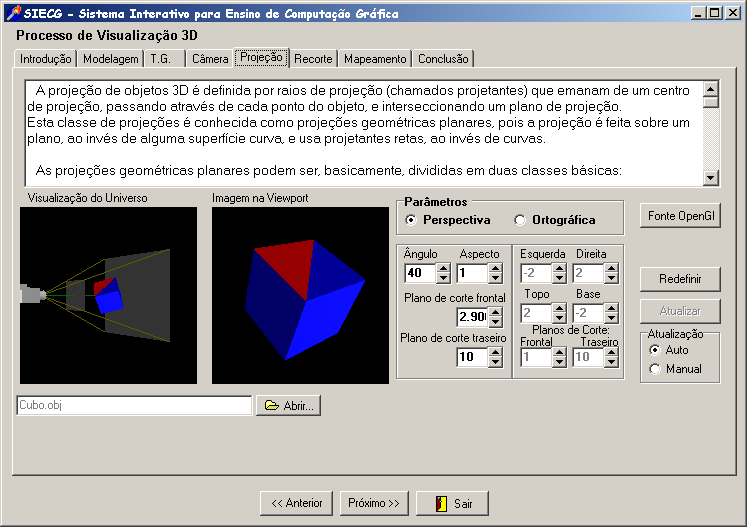
Gustavo Augusto Gomes, Isabel Harb Manssour
Abstract.
Several approaches used to teach Computer Graphics can be found in the literature.
This paper describes the design and implementation of an interactive graphic system developed to aid on the
Computer Graphic teaching. It has interactive examples and texts describing the objective and functionality of
each step of the tri-dimensional viewing pipeline. Algorithms and commented source codes of the implementation
using OpenGL and VRML (when applicable) are also available.
[
contact authors
]
Description. One of the main Computer Graphics subjects is the 3-D viewing pipeline, which typically includes the following stages: modeling, viewing, projection and workstation transformation.
We developed an application, called SIECG (Interactive System to Teach Computer Graphics), to provide interactive tools to aid the teaching of this important topic. The SIECG
interface is shown in Figures 1, 2 and 3: the user chooses the desired subject to study by selecting the corresponding tab in the top;
the text bellow, describes the theory related with this subject; the two black windows in the left represents, respectively, the universe
(with the objects and the camera, when applicable) and the final image exhibited in the viewport; through the buttons on the right side it is possible
to select the available options, change parameters, and verify the corresponding OpenGL and/or VRML code.
Future works include the extension of the system to provide other steps of the 3D visualization pipeline, as well as another tools
related to illumination models and texture mapping techniques.

Figure 1 - Modeling step: the user can identify the selected face and vertex and see the OpenGL and VRML code.

Figure 2 - Camera parameters can be changed allowing the visualization of its position and orientation.

Figure 3 - User can choose between orthogonal and perspective projection, setting the desire parameters.
After this, the user can see the corresponding OpenGL code.



